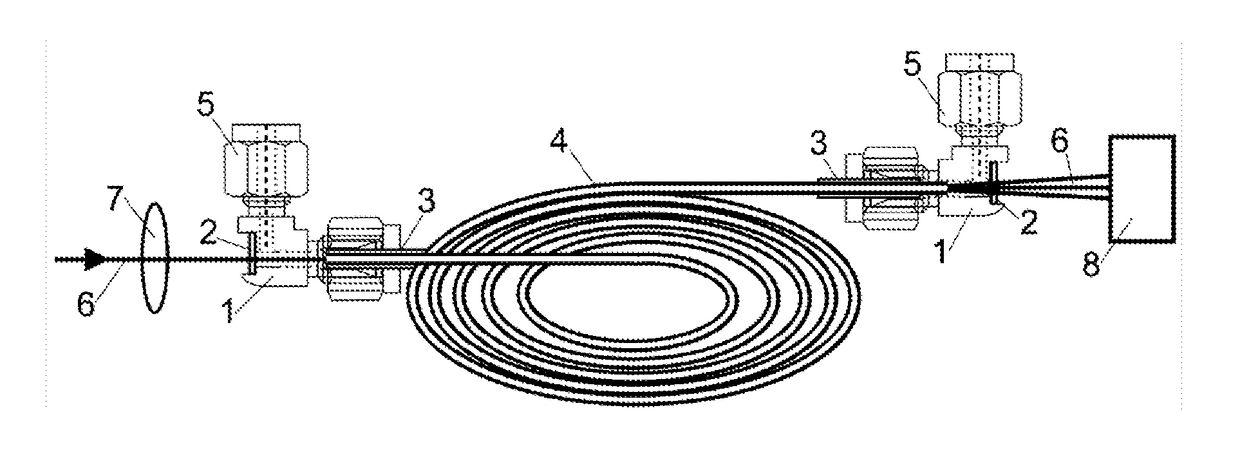Hollow fibre waveguide gas cells
- Summary
- Abstract
- Description
- Claims
- Application Information
AI Technical Summary
Benefits of technology
Problems solved by technology
Method used
Image
Examples
Embodiment Construction
[0038]The present disclosure relates to a gas cell that has a low volume and permits gas flow with a fast response time. In a preferred embodiment, a hollow fibre waveguide is terminated at both ends with a connector, e.g. a tube fitting, which comprises a window to allow both continuous gas flow through the fitting and light entry and exit.
[0039]The following key components are referred to in this disclosure:[0040]A gas cell may be a device used to contain a gaseous analyte whilst allowing the passage of light through it such that optical spectroscopy may be performed. A typical method of extending path length is to utilize multiple optical passes, such as that described in European patent no EP 2 375 237 A1.[0041]A hollow fibre waveguide may be a device used for transmitting electromagnetic radiation from the UV-visible to infra-red wavelength regions. Their main advantages over more conventional solid core optical fibre waveguides are their ability to transmit higher energies and...
PUM
 Login to View More
Login to View More Abstract
Description
Claims
Application Information
 Login to View More
Login to View More - R&D
- Intellectual Property
- Life Sciences
- Materials
- Tech Scout
- Unparalleled Data Quality
- Higher Quality Content
- 60% Fewer Hallucinations
Browse by: Latest US Patents, China's latest patents, Technical Efficacy Thesaurus, Application Domain, Technology Topic, Popular Technical Reports.
© 2025 PatSnap. All rights reserved.Legal|Privacy policy|Modern Slavery Act Transparency Statement|Sitemap|About US| Contact US: help@patsnap.com



